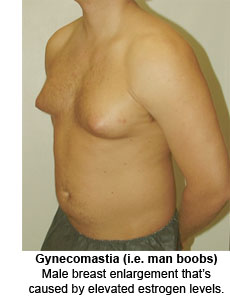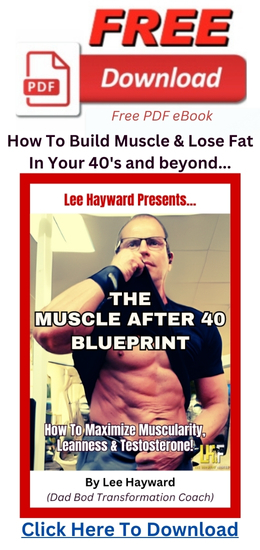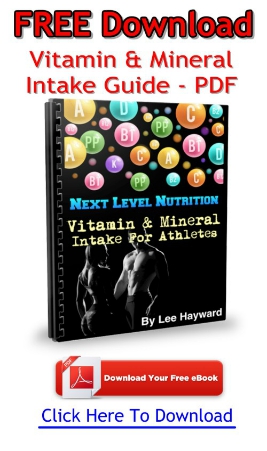Is Soy Protein Good Or Bad?
The whole topic of soy is a very controversial one. Many “experts” claim soy products to be a healthy source of vegetarian protein, but when you dig deeper and do your homework you’ll see that the risk of consuming soy far outweighs the benefits.
On the surface soy seems like a healthy food when you look at it from just the macro-nutrient angle. After all soy protein is low in fat, low in carbohydrates, and high in protein. So one would think that it should stack up with any other quality protein.
However, there is A LOT more to soy than just the protein, carbs, & fat…
There are substances in soy that act as “anti-nutrients” which can actually block the absorption of protein. This effectively cancels out any potential benefit you may have thought soy protein had in the first place. In addition to that regular consumption of soy products can lead to deficiencies in amino acid uptake from other protein sources.
|
Soy contains phytoestrogens and isoflavones which can elevate estrogen levels and lead to infertility. According to Dr. Kaayla T. Daniel, PhD in her book “The Whole Soy Story” – feeding a baby a soy based formula provides the same amount of estrogen as 5 birth control pills per day!
While this is bad enough for baby girls, can you imagine the side effects this will have on baby boys. I’m predicting that over the next generation we are going to see a HUGE rise in the number of men with “man-boobs” (i.e. gynecomastia) and low testosterone levels – This is scary stuff. |

|
In addition to the hormonal problems, soy also contains hemagglutinin, which causes your blood cells to clump together; and goitrogens, which can impair your thyroid function. Along with other dangerous substances such as phytic acid, aluminum, and high levels of manganese that are also often present in many soy foods.
And the worst thing; you maybe eating high amounts of soy without even knowing about it because soy is an ingredient in most proceeds foods. So even if you are avoiding the obvious stuff like tofu, soy milk, soy protein, soy nuts, etc. You are still getting soy in your diet if you eat processed foods.
To show you what I mean, just read the label of any canned or packed foods that you have in your kitchen right now; things like bread, crackers, canned soup, sauces, and salad dressings. Just go and read the list of ingredients on the label, I’m willing to bet that many of them list things such as: soybean oil, soy protein, soy lecithin, or the clever saying “may contain soy”.
As an example; this is the list of ingredients from a popular brand of Whole Wheat Bread:

Why Did Soy Become So Popular Recent Years?
It wasn’t that long ago that hardly anyone in the western world ate any soy products. People from our grandparent’s generation consumed very little soy. Even in Asian cultures the amount of soy consumed is very low compared to today’s standards.
To quote Nina Planck (author of: Real Food for Mother and Baby)
| “Soy farming started around 1100 BC in China, where it was used to build soil fertility and feed animals. Soy beans were not considered fit for humans until the Chinese learned to ferment them, which makes them digestible. Asian diets now include fermented soy beans in the form of natto, miso, tamari, and tempeh.
Soy producers want you to eat more soy — more than the Asians eat, and more than is good for you. The Japanese and Chinese eat 10 grams of soy per day — about two teaspoons. Yet a soy manufacturer recommends Americans eat ten times what the Japanese eat — 100 grams of soy protein per day. In The Soy Zone, Barry Sears recommends a daily diet of a minimum of 50 grams of soy, and up to 75 grams for women and 100 grams for men.” |
Nutritionist Mary Enig, PhD says:
| “The reason there’s so much soy in America is because they [the soy industry] started to plant soy to extract the oil from it and soy oil became a very large industry. Once they had as much oil as they did in the food supply they had a lot of soy protein residue left over, and since they can’t feed it to animals, except in small amounts, they had to find another market.” |
It’s as if soy just appeared out of nowhere to become the “miracle health food” of the 21st Century. From 1992 to 2007, soy food sales increased from $300 million to over $4 billion! This rapid growth came about due to a massive shift in societies attitude about soy.
The soy industry has invested huge amounts of money in advertising campaigns to promote soy as a health food. And this advertising has worked very well because over 85 percent of consumers perceive soy products as healthy and consume them regularly. Everything from soymilk, soy protein, soy burgers, soy energy bars, soy ice cream, soy cheese, soy cereal, etc. – In fact most processed foods these days contain soy.
This shrewd marketing and outright lies to the masses has produced large profits for the soy industry, while impairing the health of the consumers who have been deceived. They have cleverly targeted health conscious consumers with a well thought out; well-financed campaigns to convince you that soy is healthy. When in fact it is one of the biggest lies in the entire health food industry.
The History Of Soy In America…
| Soy was originally grown as fertilizer and cheap animal feed, it was never meant for human consumption. Henry Ford even used soy in the manufacturing process of automobiles.
By 1935 every Ford car used soybean oil in the manufacturing process. Soybean oil was used in the paint and also for fluid in the shock absorbers. Auto body panels were even made from soy-based plastics. |
 |
It wasn’t until the Great Depression and World War II when soybeans started being used in North America and Europe as a substitute for protein foods – and not an ideal one at that – it was more of a “last resort” type of deal.
Now while “natural” soy products are bad enough, it gets even worse when you consider that 91 percent of soy grown in America is heavily sprayed with pesticides and is Genetically Modified (GM). The genetic modification is done to resist toxic herbicides. While this is meant to increase farming efficiency and reduce expenses, the downside is that soy is loaded with toxic pesticides. GM soy has been linked to an increase in allergies and it has even been shown to cause potential for infertility in future generations.
Bottom line, if you are concerned about your health and the health of your family, you should avoid consuming soy products. There are a lot of other protein sources that are available that are much healthier and safer for you to consume.
If you would like to read more about Soy, than I encourage you to check out the links below. Even take the time to do your own homework, just a simple google search will provide you with more than enough information to come to your own decisions about whether or not you should consume soy products.
|
More Soy Information: http://www.huffingtonpost.com/jeffrey-smith/genetically-modified-soy_b_544575.html http://www.amazon.com/Whole-Soy-Story-Americas-ebook/dp/B0026UNZU4/ref=sr_1_1 http://en.wikipedia.org/wiki/Soybean http://www.greenlivingonline.com/article/dangers-soy http://articles.mercola.com/sites/articles/archive/2010/09/18/soy-can-damage-your-health.aspx |







11 Comments
Thinh
Thanks for the info on soy, Lee. I learned soy was really bad for you about 3 years ago. It’s okay (but not that great) to eat fermented soy such as soy sauce, natto, miso, tamari, and tempeh though. But do NOT eat unfermented soy products such as tofu soy milk, soy beans, etc.
Martin
Have you heard of Visalus shake mix from Visalus sciences? Supposedly the isoflvones have been removed so there is no worry of any negative estrogenic side effects.
MMT
Good article ! I could never eat soy without experiencing problems with my liver. For me, soy IS NOT healthy food. Eating healthy is primarily eating the dishes our grandparents used to eat, not experimenting new fancy stuff !
matt
What about protein powders? Emulsifier – Soy Lecithin seems to be in the ingredients list for most top selling brands?
leehayward
One high quality protein powder that I like a lot is Blue Star Iso-Smooth from http://www.BlueStarMuscle.com this one doesn’t have any soy lecithin.
thakor solanki
how to get rid of man boobs by doing exercise ?
Darcy
Interesting read and it ties in with something I have wondered about for a while.I have lived in Japan for over 16 years and people with thyroid problems seem to be more common here. Just to qualify my statement, I have not done any research or looked at statistics so I`m not making any claims or assumptions.It`s just that it comes up in conversation far more then back home (Aus).
Could be something in it.
Wreckr
Bro thnx for help’n out ,i was rlly confusd about soya protein u totally raise the curtain brought the scene in front of us, did gr8 job bro ……
Aj
I eat soy protein isolate about 90-100g a day. I haven’t noticed any negative effects in the past 3 months I started this habit. Seems like a good cheap source of protein so far. Are these bad effects reversible after dropping the soy? I’m sensitive to lactose and other protein sources are at least twice the cost or more anyways.
karan
Hey thnx lee i just started consuming soya nd from now onwards i m gong to stop it from consuming
Stacie A
I’m just wondering about the fact that WOMEN have to “cover up” their “boobs” while in public and why MEN with “moobs” are NOT required to do so. Can anyone say “double standard”?